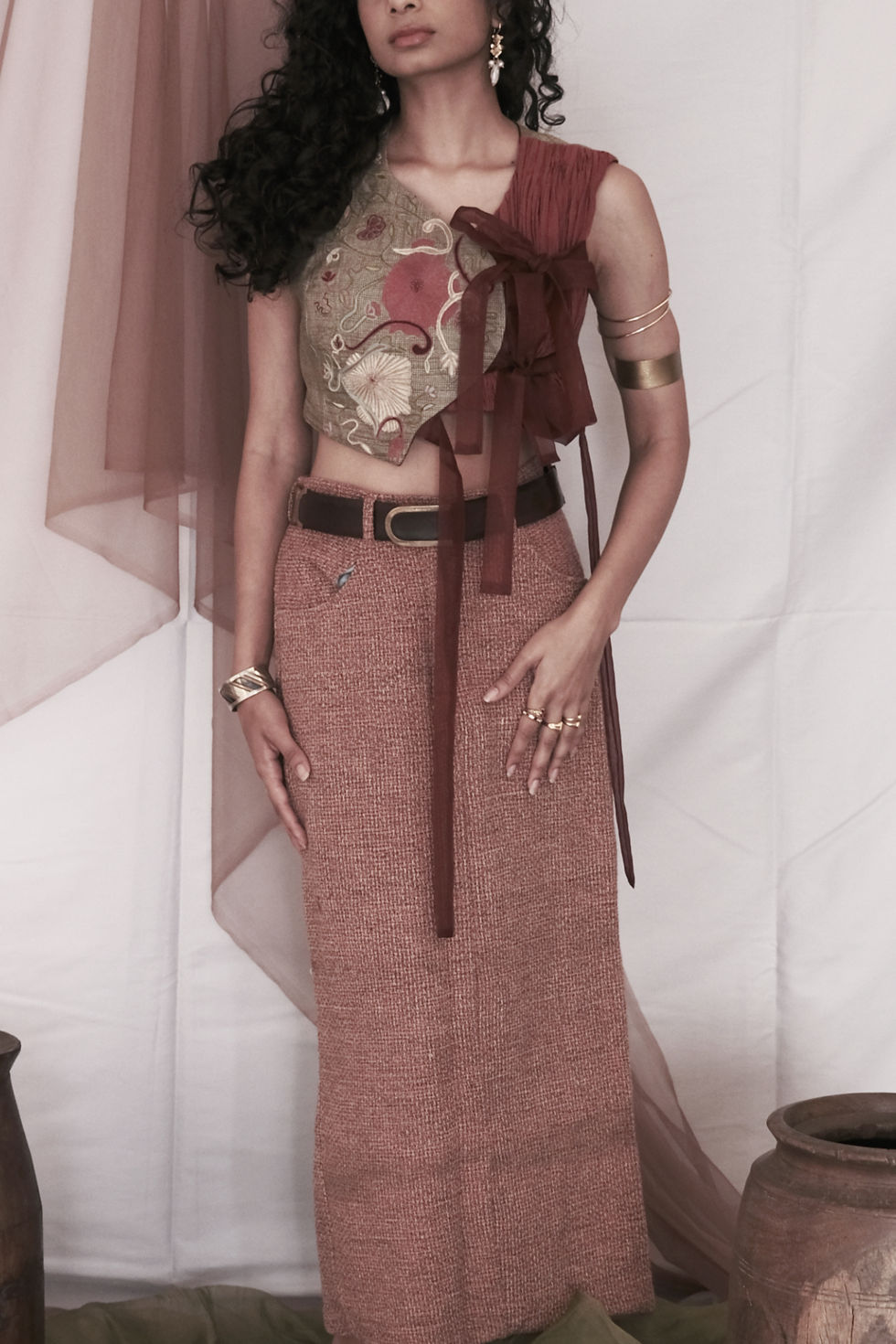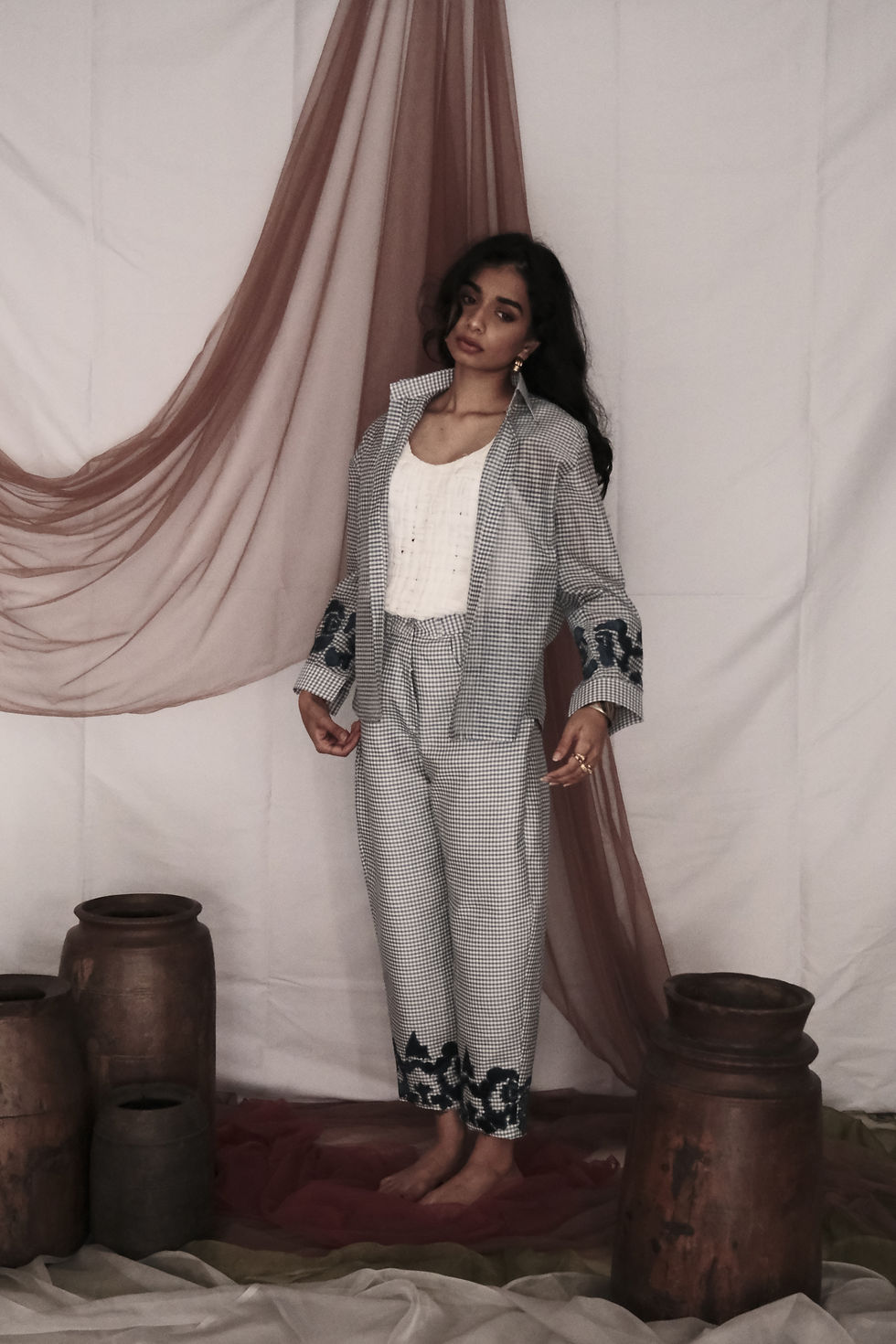As its primary statement, and at first glance, the viewer’s gaze always falls on the clamshell embroidery on Kathema, inspired by the commentary of the clamshell as a place of birth, and beginning a conversation on femininity, life and the female form. With this, the garment begins its meditation on the intersection of womanhood and perception, where the female form is both celebrated and condemned.
Throughout history, women have been confined to a binary—reduced to two archetypes under the virgin-whore dichotomy, cast as angels or seductresses, embodiments of purity or physical vessels of sin. Of the women tied into this enduring narrative, most fell victim to the latter classification, many to their ruin. Ironically, the women woven into our tapestry share a connection to the pearl—a symbol of purity in countless cultures, perhaps due to its origins in water, a place of cyclical cleansing and renewal. But today we ask: what role did the pearl play in shaping perceptions of these women? Was it a beacon of redemption, or did it serve to deepen their vilification by drawing a sharper contrast between the purity it symbolized and the societal sinfulness projected onto their identities?
Kathema embodies this tension, exploring duality both in its design and referencing. Its mild corset-like shape is inspired by Catherine de Medici’s wardrobe, which often saw the use of a medical corset, for its purpose of treating mild scoliosis. Kathema’s neckline also takes from the shape that Catherine would often drape her Medici pearls over her bodice. The neckline also becomes quite similar to the clothing of Ancient Minoan women, who had not yet vilified the female form as overtly sexual or sinful.
The neckline, peaking toward the center to obscure the wearer’s décolletage, carries an inherent irony—its intent to conceal instead emphasizes the curves it seeks to mask, underscoring the flawed construction of the virgin-whore dichotomy - the phenomenon emphasizing on how mis-constructed the foundation for the virgin-whore labelling is. This commentary is further accentuated by the single strap, its fabric shaped into curves evocative of primitive undergarments.
Kathema is a statement—a reminder of how history and culture have shaped, confined, and distorted the identities of women while leaving room for reclamation and redefinition.
Kathema can be worn as a top, or a blouse on a lehenga or a sari.
Colourway: Butter Yellow with accents in shades of blue, green, red, and porcelain.
Fit: Figure Hugging. Cropped.
Fabric Composition:
Linen Blend
Rayon Crepe
dry clean only
top of page
₹8,200.00Price
book an appointment
bottom of page


















